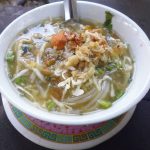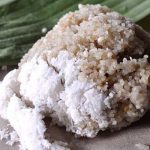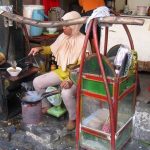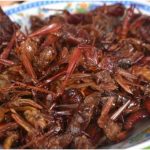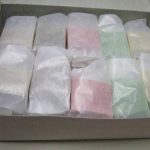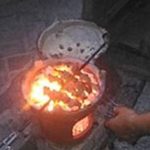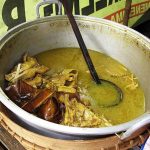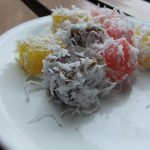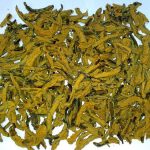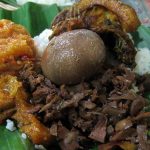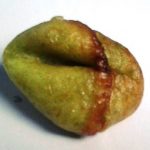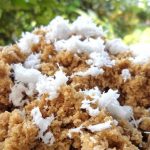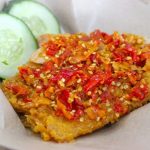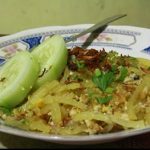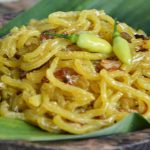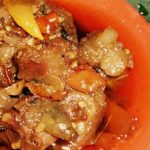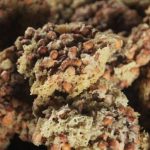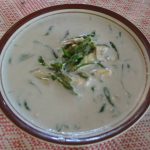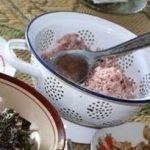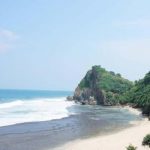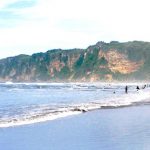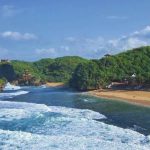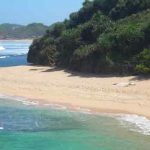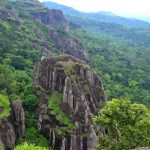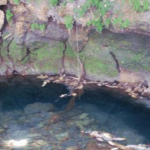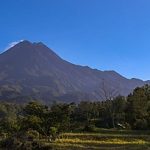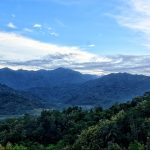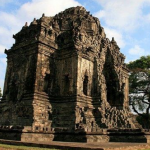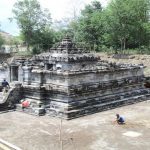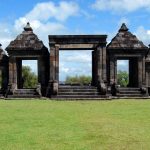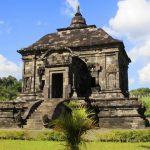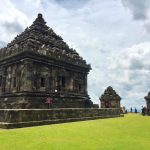Daerah Istimewa Yogyakarta
Special Region of Yogyakarta
Special Region of Yogyakarta
Yogya Istimewa - Yogya Special
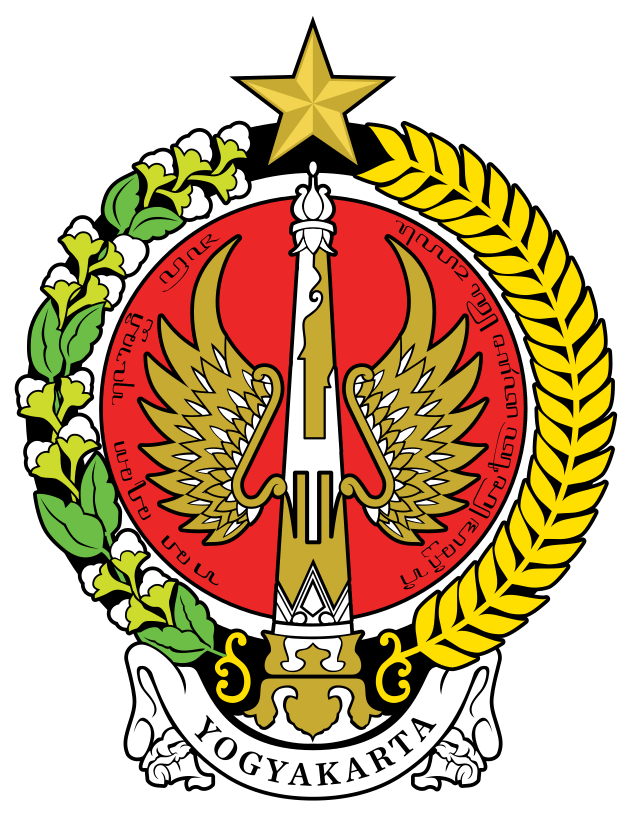 The Special Region of Yogyakarta (Indonesian: Daerah Istimewa (D.I.) Yogyakarta, pronounced /ˌjɒɡjəˈkɑːrtə/) is a provincial-level autonomous region of Indonesia in the southern Java. It is bordered by the Indian Ocean to the south, as well as sharing all the land borders to the province of Central Java. Ruled by the Yogyakarta Sultanate, the region is the only officially recognised monarchy within the government of Indonesia. The city of Yogyakarta is a popular tourist destination and cultural centre of the region.
The Special Region of Yogyakarta (Indonesian: Daerah Istimewa (D.I.) Yogyakarta, pronounced /ˌjɒɡjəˈkɑːrtə/) is a provincial-level autonomous region of Indonesia in the southern Java. It is bordered by the Indian Ocean to the south, as well as sharing all the land borders to the province of Central Java. Ruled by the Yogyakarta Sultanate, the region is the only officially recognised monarchy within the government of Indonesia. The city of Yogyakarta is a popular tourist destination and cultural centre of the region.
The Yogyakarta Sultanate has been established since 1755 and provided an unwavering support for Indonesia’s independence during the Indonesian National Revolution (1945–1949). As a first-level division in Indonesia, Yogyakarta is governed by Sultan Hamengkubuwono as the governor and Prince Paku Alam as the vice governor. With a land area of 3,185.8 km², it is the second-smallest province of Indonesia after Jakarta.
– Charter of positions of Sri Sultan Hamengku Buwono IX and Sri Paku Alam VIII dated 19 August 1945 from the President of the Republic of Indonesia.
– Mandate of Sri Sultan Hamengku Buwono IX and Sri Paku Alam VIII dated 5 September 1945 (made separately), and
– Mandate of Sri Sultan Hamengkubuwono IX and Sri Paku Alam VIII dated October 30, 1945 (made in one manuscript).
In the course of subsequent history, Yogyakarta’s position as an Autonomous Region at the level of a Province in accordance with the purpose of Article 18 of the 1945 Constitution (before the amendment) was regulated by Law Number 22 Year 1948 concerning the Basic Law of Regional Government. As a follow-up, the Yogyakarta Special Region was formed by Law Number 3 of 1950 concerning the Establishment of the Special Region of Yogyakarta Government Regulation Number 31 of 1950 as amended, and lastly added by Law Number 9 of 1955 (State Gazette of 1959 Number 71, Supplement to the State Gazette Number 1819) which is still valid. The law states that DIY includes the Ngayogyakarta Hadiningrat Sultanate Region and the Pakualaman Duchy Region. In every law that regulates Regional Government, it is stated that the specialty of DIY is still recognized, as last stated in Law Number 32 of 2004.
In the history of the struggle to defend the independence of the Unitary Republic of Indonesia (NKRI), DIY has an important role. It is proven that on January 4, 1946 to December 27, 1949, it was used as the capital city of the Republic of Indonesia. This January 4 was determined to be the Yogyakarta City Day of the Republic in 2010. At this time the Sultanate of Ngayogyakarta Hadiningrat was led by Sri Sultan Hamengkubuwana X and the Kadipaten Pakualaman led by Sri Paku Alam X who also served as Governor and Deputy Governor of DIY. Both played a decisive role in maintaining Javanese cultural values and customs and were the unifier of the people of Yogyakarta.
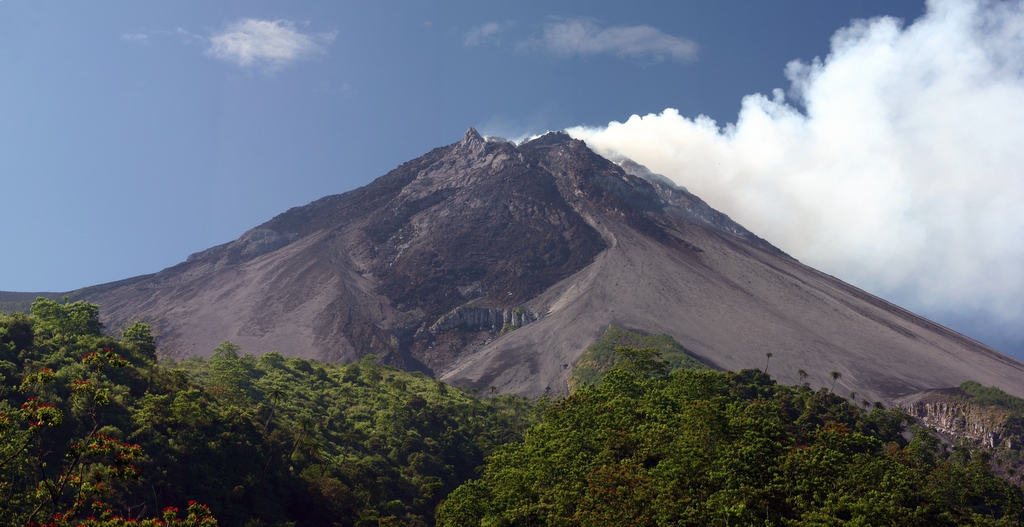 Geography
Geography
DIY is located in the south-central part of Java Island, geographically located at 8º 30 ‘- 7º 20’ South Latitude, and 109º 40 ‘- 111º 0’ East Longitude. Based on the landscape, the DIY area can be grouped into four physiographic units, namely Merapi Volcano physiographic unit, Sewu Mountains physiographic unit or Seribu Mountains physiographic unit, Kulon Progo Mountains physiographic unit, and Lowland physiographic unit.
Merapi Volcano physiographic unit, which stretches from volcanic cones to volcanic fluvial plains including volcanic landscapes, covering Sleman, Yogyakarta City and parts of Bantul. Cone areas and volcanic slopes are protected forest areas as water catchment areas for subordinate areas. This landscape unit is located in northern Sleman. Mount Merapi, which is an active volcano with special characteristics, has an attraction as an object of research, education and tourism.
 The Southern Mountain Unit or the Mountains of Seribu, which is located in the Gunungkidul region, is a limestone hill area and barren karst landscape, and lacks surface water, with the center being the Wonosari basin which has undergone tectonic uplift to form the Wonosari Plateau (plateau Wonosari). This unit is a landscape resulting from a solutional process (dissolution), with limestone as the main material, and has the characteristics of a shallow soil layer, and very sparse vegetation cover.
The Southern Mountain Unit or the Mountains of Seribu, which is located in the Gunungkidul region, is a limestone hill area and barren karst landscape, and lacks surface water, with the center being the Wonosari basin which has undergone tectonic uplift to form the Wonosari Plateau (plateau Wonosari). This unit is a landscape resulting from a solutional process (dissolution), with limestone as the main material, and has the characteristics of a shallow soil layer, and very sparse vegetation cover.
The Kulon Progo Mountain Unit, which is located in the northern part of Kulon Progo, is a denudational structural landscape with a hilly topography, steep slopes, and little groundwater potential.
The Lowland Unit is a fluvial landscape (the result of river deposition) which is dominated by alluvial plains, stretching in the southern part of DIY, from Kulon Progo to Bantul which borders the Seribu Mountains. This unit is a fertile area. Included in this unit are the unused marine and eolin landscapes, a coastal area stretching from Kulon Progo to Bantul. Especially for the marine and eolin landscapes in Parangtritis, Bantul, which are famous for their sand dunes, are a natural laboratory for the study of coastal landscapes.
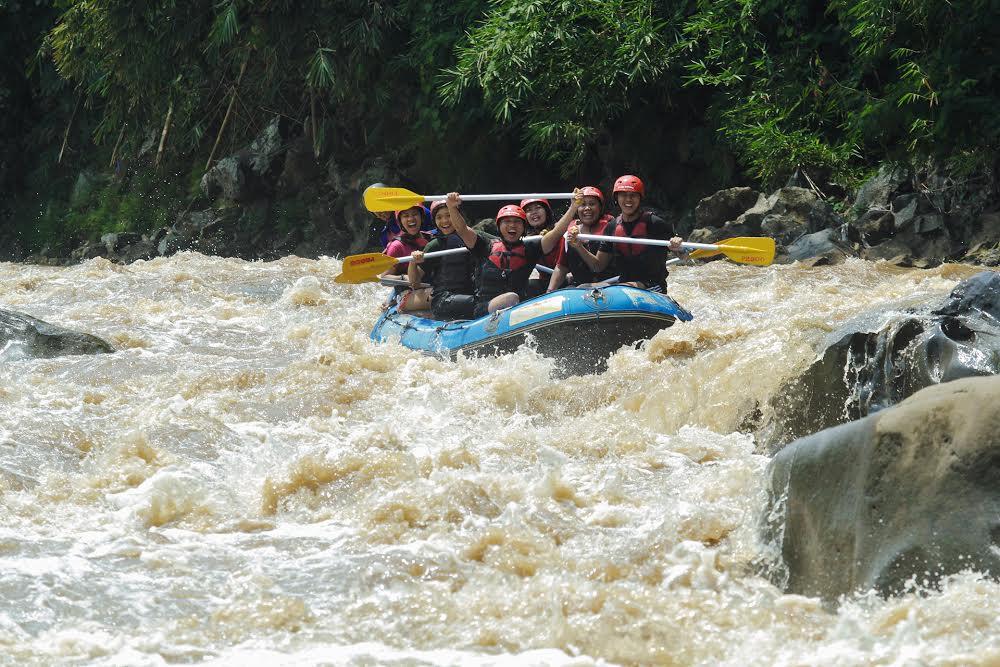 This physiographic condition has an influence on population distribution, the availability of regional infrastructure and facilities, and the socio-economic activities of the population, as well as the unequal progress of development between regions.
This physiographic condition has an influence on population distribution, the availability of regional infrastructure and facilities, and the socio-economic activities of the population, as well as the unequal progress of development between regions.
Areas that are relatively flat, such as the fluvial plain which includes Sleman Regency, Yogyakarta City, and Bantul Regency (especially in the Yogyakarta Urban Agglomeration area) are areas with high population density, and have high intensity socio-economic activities, so they are more areas. advancing, and growing.
Two quite large river basins (DAS) in DIY are the Progo Watershed in the west, and the Opak-Oya Watershed in the east. The rivers that are quite famous in DIY include the Serang River, Progo River, Bedog River, Winongo River, Boyong-Code River, Gajah Wong River, Opak River, and Oya River.
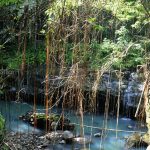
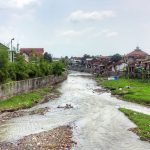
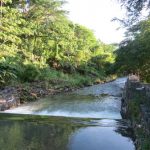
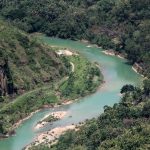
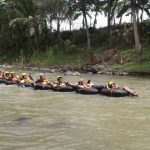
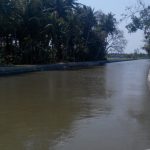
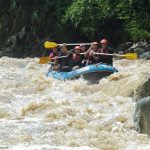
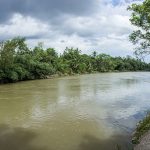
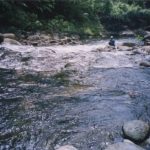












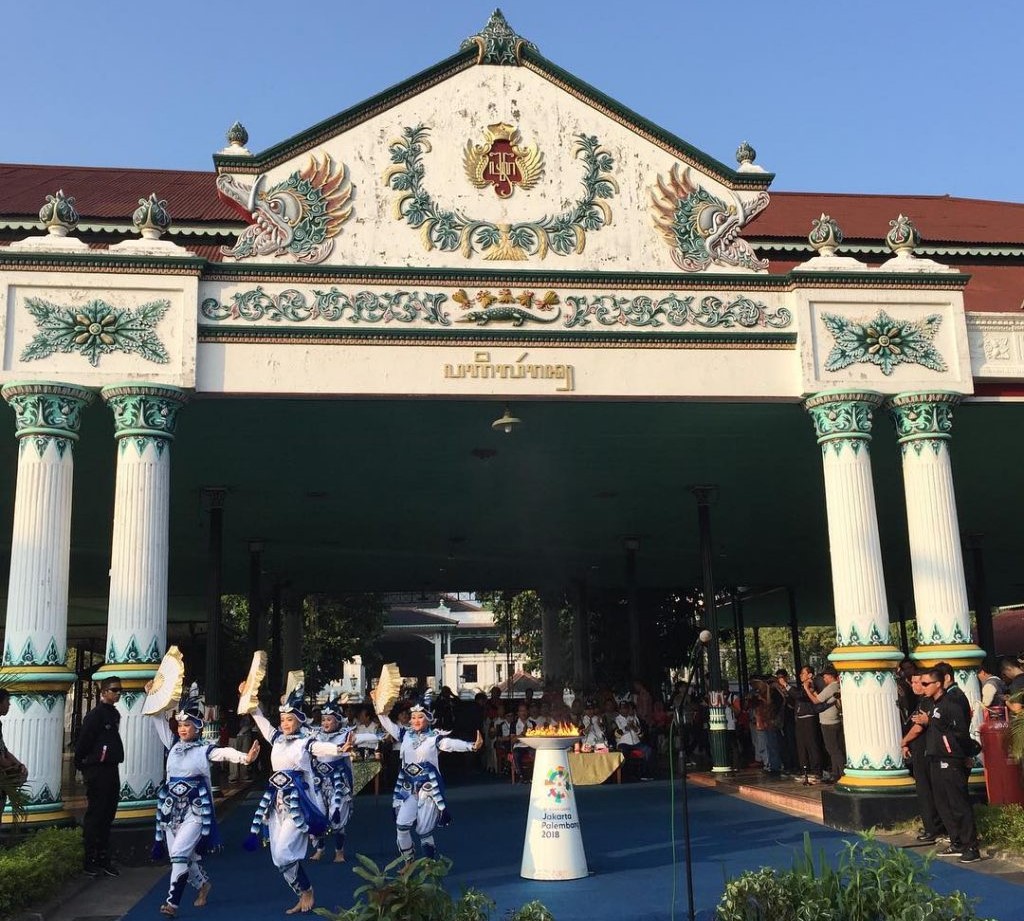 Culture
Culture
DIY has a variety of cultural potentials, both tangible (physical) and intangible (non-physical) cultures. Tangible cultural potentials include cultural heritage areas and cultural heritage objects, while intangible cultural potentials include ideas, value systems or norms, works of art, social systems or social behavior that exist in society.
DIY has no less than 515 Cultural Heritage Buildings spread across 13 Cultural Heritage Areas. The existence of cultural assets from the heritage of the high civilizations of the past, with the Kraton as a noble heritage institution that is still preserved, is an embryo, and gives a spirit for the growth of community dynamics in cultural life, especially in cultural arts, and with tradition.
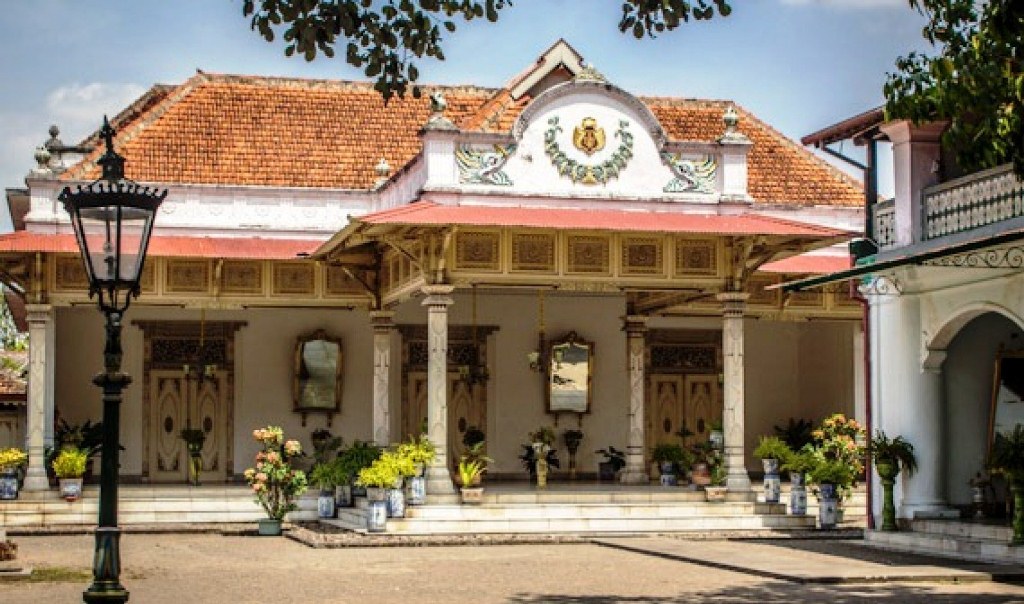 In addition, DIY also has 30 museums, two of which, namely the Ullen Sentalu Museum, and the Sonobudoyo Museum are projected to become an international museum. In 2010, the percentage of cultural heritage objects that did not move in the good category was 41.55%, while visits to museums reached 6.42%.
In addition, DIY also has 30 museums, two of which, namely the Ullen Sentalu Museum, and the Sonobudoyo Museum are projected to become an international museum. In 2010, the percentage of cultural heritage objects that did not move in the good category was 41.55%, while visits to museums reached 6.42%.
 Several museums located in DIY, include:
Gadjah Mada University Biology Museum,
Affandi Museum,
Children’s Museum Under the Stairs,
Yogyakarta Batik and Embroidery Museum,
Fort Vrederburg Museum,
Happy Loka Museum,
Museum of the Indonesian Women’s Movement, and
Museum of the Joglo Cipto Wening Batik Environment.
Several museums located in DIY, include:
Gadjah Mada University Biology Museum,
Affandi Museum,
Children’s Museum Under the Stairs,
Yogyakarta Batik and Embroidery Museum,
Fort Vrederburg Museum,
Happy Loka Museum,
Museum of the Indonesian Women’s Movement, and
Museum of the Joglo Cipto Wening Batik Environment.
There are also several art galleries located in Yogyakarta, including: Bentara Budaya Yogyakarta, Museum and Clay, Wahyu Mahyar Gallery, and Affandi Gallery.
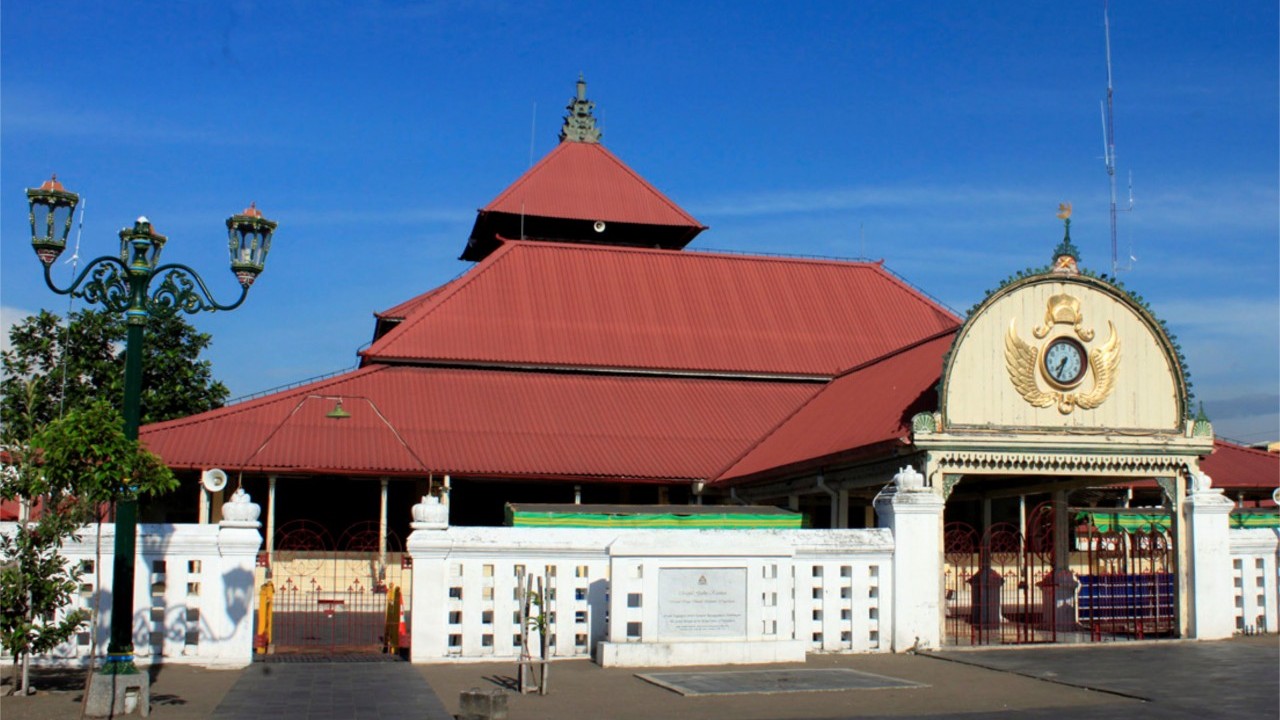 Religion
Religion
The majority of Yogyakarta’s population is Muslim, namely 92.62%, the rest is Catholic 4.50%, then Protestant Christianity 2.68%, Hinduism 0.09%, Buddhist 0.09% and others 0.02%. The facilities for houses of worship continued to develop, in 2007 consisting of 6214 mosques, 3413 violations, 1877 mushollas, 218 churches, 139 chapels, 25 temples / temples and 24 vihara / pagoda.
The number of Islamic boarding schools in 2006 was 260, with 260 kyai, 2,694 ustaz and 38,103 santri. Meanwhile, the number of public and private madrasas consists of 148 madrasah ibtidaiyah, 84 madrasah tsanawiyah and 35 madrasah aliyah. Religious activity can also be seen from the increase in the number of pilgrims from year to year, and in 2007 there were 3,064 pilgrims.
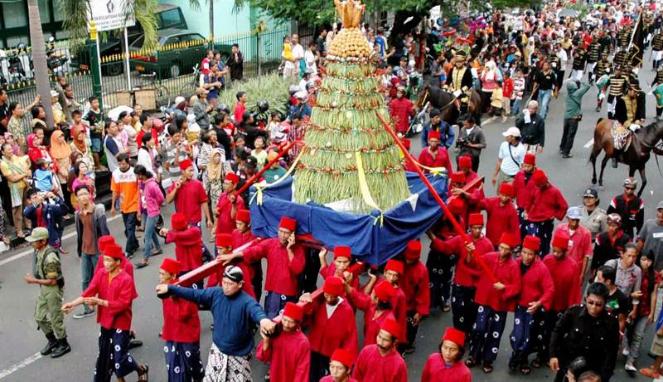 Traditional Ceremonies
Traditional Ceremonies
Yogyakarta customs and culture are strongly influenced by the Kraton. When viewed from its history and background, the Kraton Yogyakarta is the source of the customs and culture of the people of Yogyakarta.
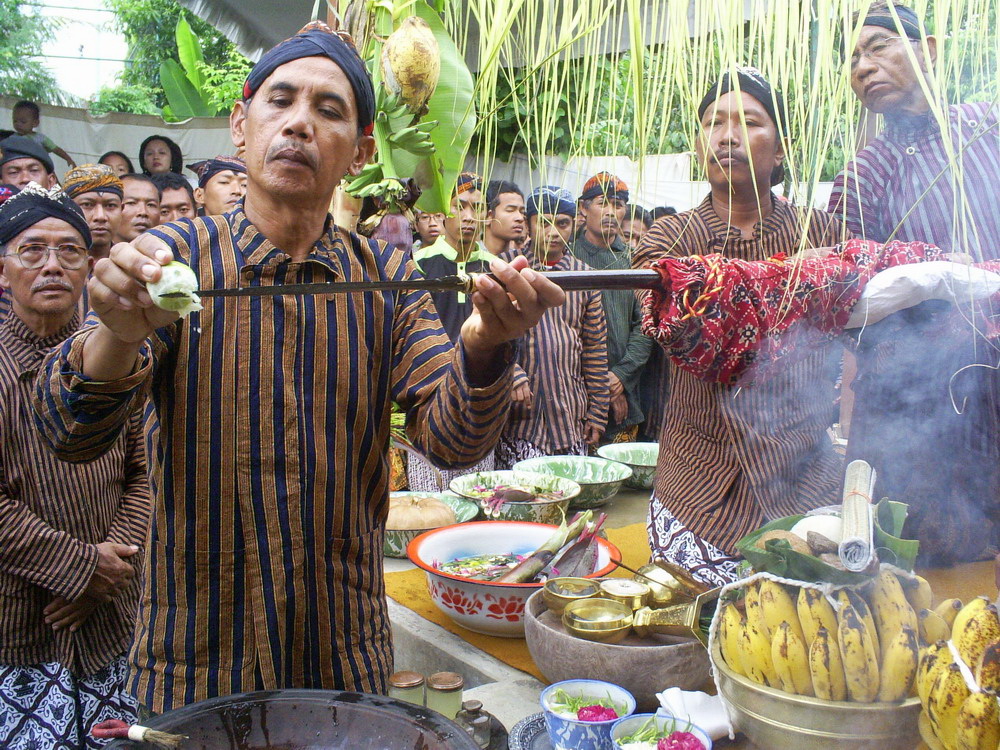 The Kraton of the Ngayogyakarta Hadiningrat Sultanate or commonly known as the Kraton of Yogyakarta continues to maintain its characteristics, customs and culture such as the Sekaten Ceremony, Grebeg Muludan or Tumplak Wajik.
The Kraton of the Ngayogyakarta Hadiningrat Sultanate or commonly known as the Kraton of Yogyakarta continues to maintain its characteristics, customs and culture such as the Sekaten Ceremony, Grebeg Muludan or Tumplak Wajik.
No wonder why many foreign tourists and domestic tourists come to Yogyakarta and are interested in deepening the cultural charm that emanates from the Kraton… Here are some of them, the Yogyakarta Traditional Ceremony that you can witness its existence today.

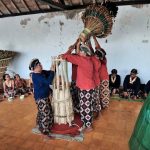
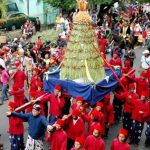
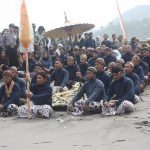
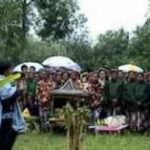
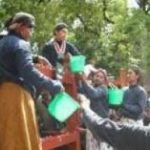
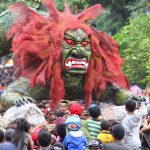
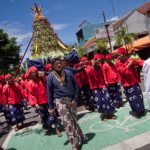

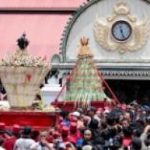
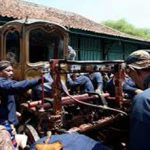
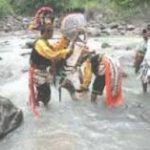
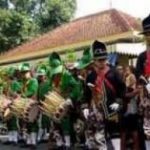
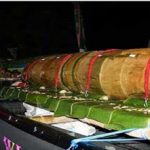
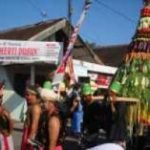
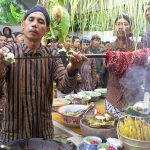












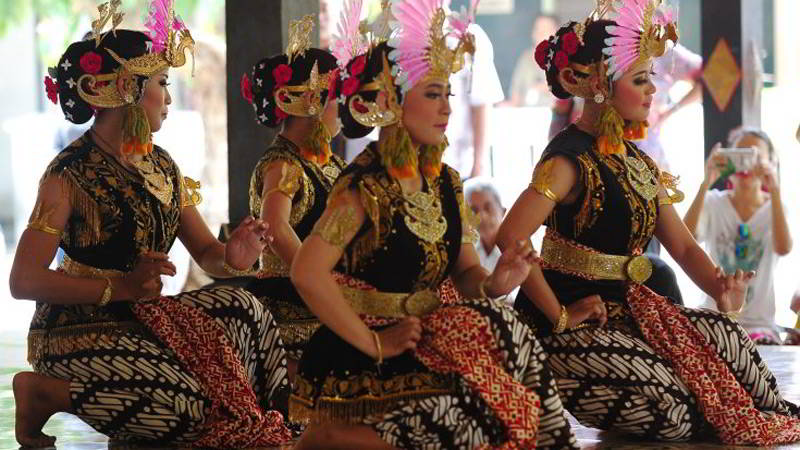 Traditional dance
Traditional dance
The existence of the Yogyakarta Palace which is still sustainable, also presents a variety of cultural riches of high artistic value, especially dance.
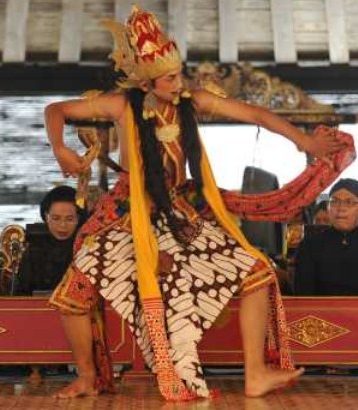 Classic Yogyakarta style dance or also known as the Mataraman style has developed along the way and has been around since the Yogyakarta Palace was founded. Generally, Joged Mataraman or Yogyakarta dance is very full of historical, sociological, political values and educational contents.
Classic Yogyakarta style dance or also known as the Mataraman style has developed along the way and has been around since the Yogyakarta Palace was founded. Generally, Joged Mataraman or Yogyakarta dance is very full of historical, sociological, political values and educational contents.
In general, the Mataraman beksan has distinctive standard rules. At the technical level, there are four criteria such as sawiji, greget, sengguh and mingkuh. Of course, to understand philosophical meaning in its entirety and in depth requires a process or stage in the form of constant practice.
The development of classical dance in Yogyakarta style reached its peak during the era of Sri Sultan Hamengkubuwana VIII. At that time, Wayang Wong appeared as a monumental work which at the same time became a symbol of the king’s legitimacy.
Wayang Wong art has also inspired the birth of the freelance beksan (dance) that takes ideas from these artistic figures. Through Wayang Wong art, various forms of choreography were created, both single and pair dances.
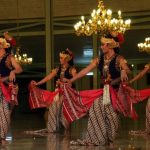
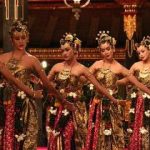
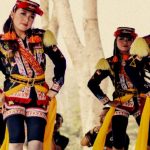


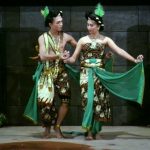
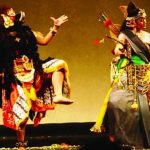
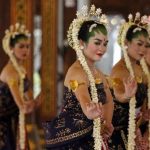

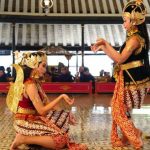
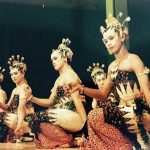
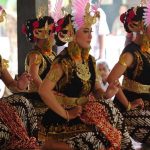
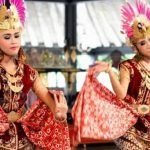
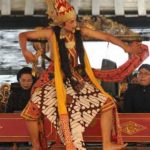
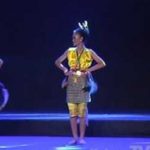
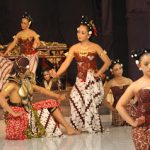
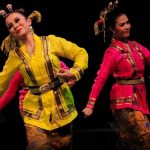
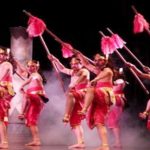












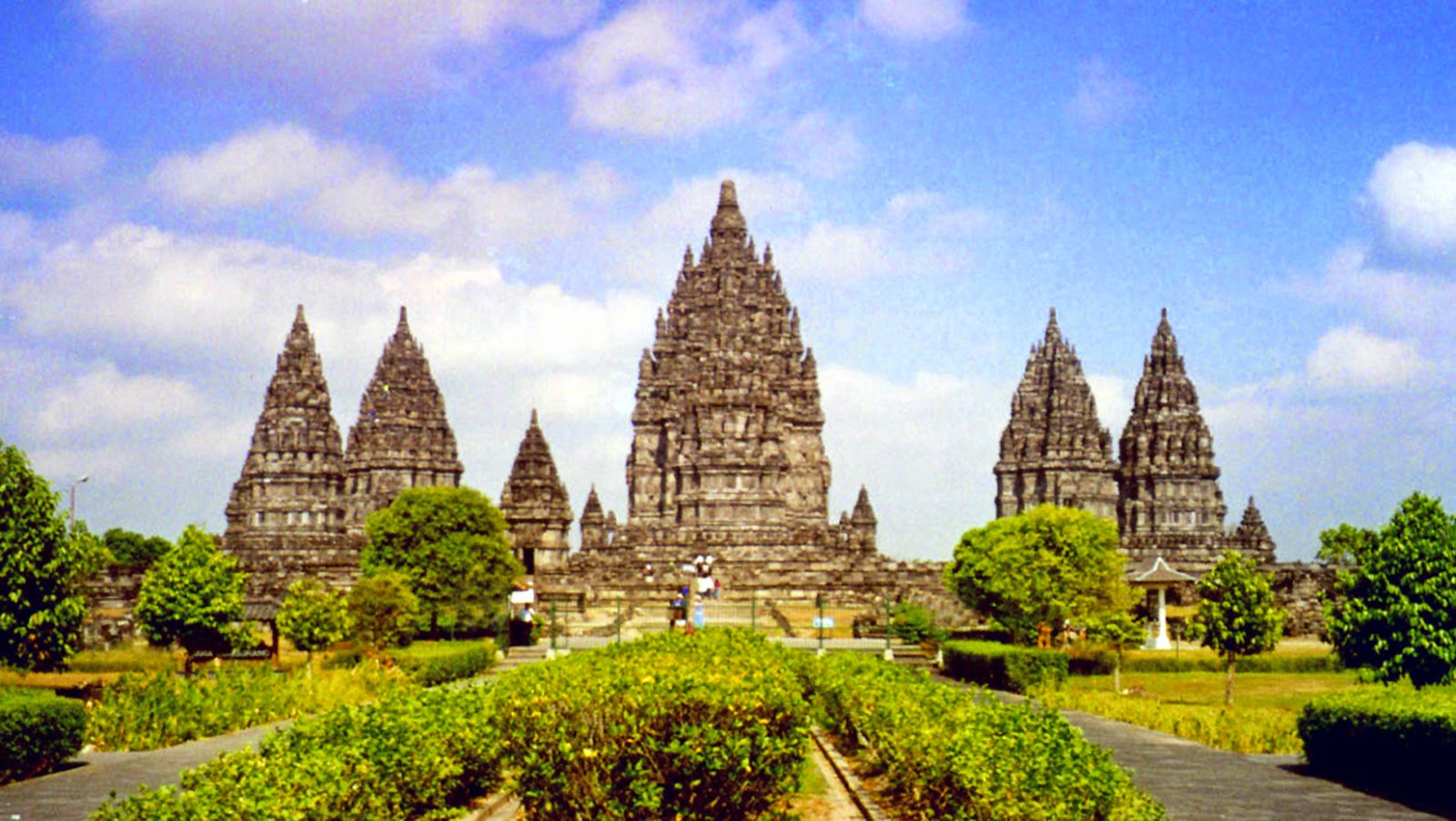 Candi/Temple
Candi/Temple
The great dynasties in the archipelago in the period around 750-850 AD there were two major dynasties that inhabited the central part of Java Island which we now know as Central Java. In this area, there are two dominant dynasty who rule one and another, namely the Sanjaya and Syailendra Wangsa.
The central region of northern Java was controlled by the Hindu Sanjaya clan, while the southern part of central Java was controlled by the Buddhist Wangsa Syailendra. These two great dynastic powers have made the temples in these two regions have two very different features from each other.
These two great dynasties were finally united with a marriage between Rakai Pikatan from Wangsa Sanjaya and Pramodawardhani Putri from Maharaja Samarattungga from Wangsa Syailendra. The marriage took place around the year 838-851 AD.
 The Hindu Mataram Kingdom that once triumphed in the southern region of Central Java, which is currently the Special Region of Yogyakarta, has many Hindu temples and a small number of Buddhist temples. After the death of King Sana from the Sanjaya Dynasty, the leadership of the Mataram Kingdom was continued by Rakai Pikatan, a prince from the Sanjaya Dynasty.
The Hindu Mataram Kingdom that once triumphed in the southern region of Central Java, which is currently the Special Region of Yogyakarta, has many Hindu temples and a small number of Buddhist temples. After the death of King Sana from the Sanjaya Dynasty, the leadership of the Mataram Kingdom was continued by Rakai Pikatan, a prince from the Sanjaya Dynasty.
Since Rakai Pikatan ascended to the throne, since then the influence of Sanjaya with Hindu style began to dominate in Mataram, replacing Buddhism which was dominant in the central region of southern Java. Rakai Pikatan’s power ended Buddhist domination in the Mataram area. This has an effect on the building of the existing candles and was made in the era of Rakai Pikatan to rule the Hindu Mataram Land.
In 920, the ruler of the Hindu Mataram Kingdom, namely Raja Tulodong, at this time a large monumental temple was built, now we know it called Prambanan Temple. Prambanan is the largest Hindu temple complex in Southeast Asia. At this time, Ramayana literary works were written in Kawi language.
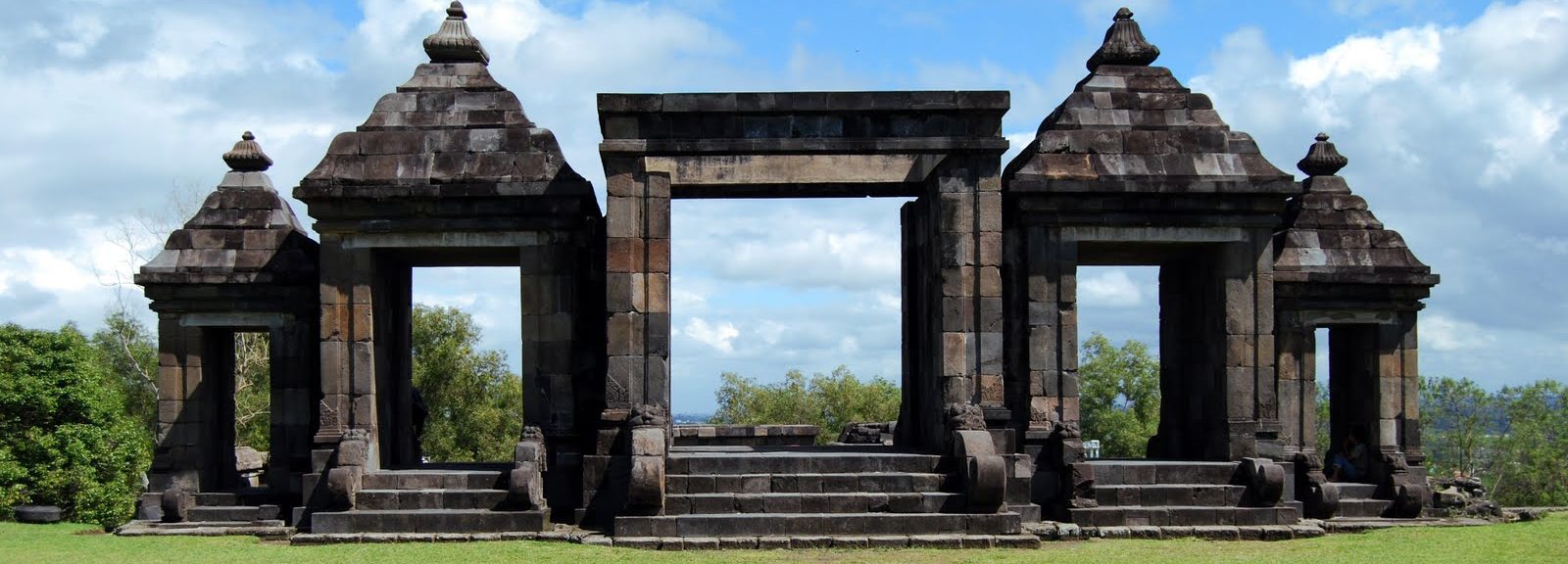 There are two types of temples in the Yogyakarta Special Region, namely Hindu and Buddhist. Most of the temples in Yogyakarta are made of andesite stone, only one which is now known to be made of red brick, namely Abang Temple.
There are two types of temples in the Yogyakarta Special Region, namely Hindu and Buddhist. Most of the temples in Yogyakarta are made of andesite stone, only one which is now known to be made of red brick, namely Abang Temple.
Buddhist temple buildings include Kalasan Temple, Banyunibo Temple and Sari Temple. Hindu temple buildings are more dominant in the Yogyakarta area, possibly after Rakai Pikatan as the initial ruler of Hindu Mataram, so the construction of the temple was made by the Hindu Mataram Government.
Kabupaten & Kotamadya

Bantul
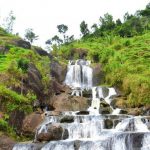
Gunung Kidul

Kulon Progo
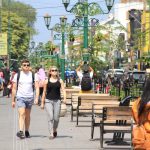
Yogyakarta

Bantul

Gunung Kidul

Kulon Progo

Yogyakarta

Bantul

Gunung Kidul

Kulon Progo

Yogyakarta
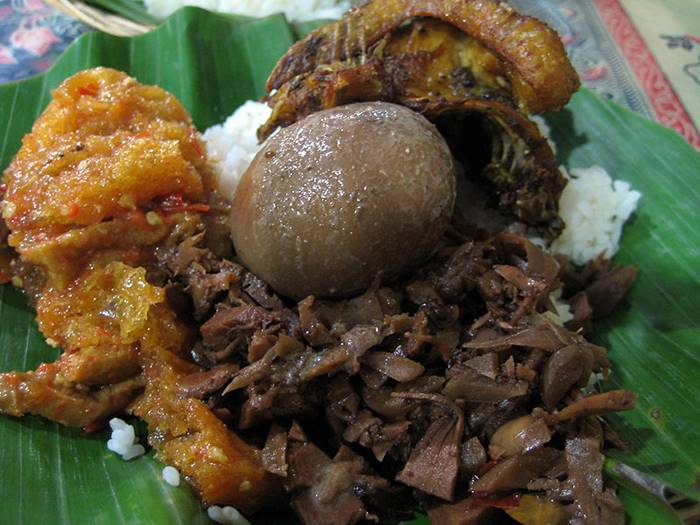 Culinary
Culinary
Jogjakarta is a province that is rich in culture, hospitality, and of course its culinary specialties. Jogjakarta has many unique and certainly delicious foods that you must try if you visit this province!
Jogjakarta is apparently not only famous for its stunning natural beauty. However, this pronvince is also very popular with culinary specialties that are famous from the past until today that can spoil your tongue. One of them is Jogjakarta traditional culinary, which is a mainstay of every house in the local area.
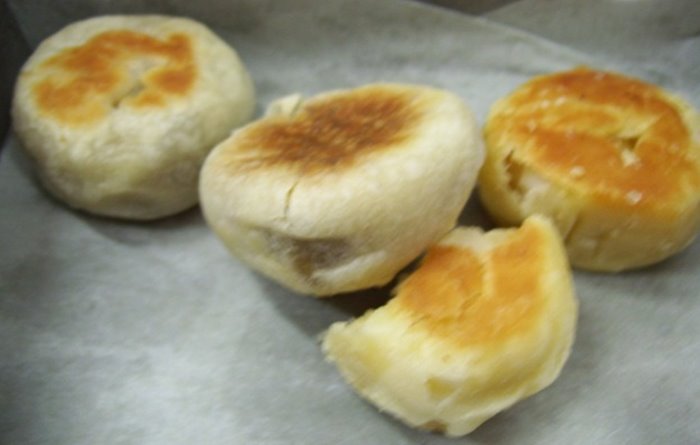 Jogjakarta traditional food is the type of culinary that is most favored by every traveler, both domestic and foreign. Jogjakarta culinary itself is famous for its sweet and delicious taste. So do not be surprised if the typical Jogjakarta food is the target of tourists.
Jogjakarta traditional food is the type of culinary that is most favored by every traveler, both domestic and foreign. Jogjakarta culinary itself is famous for its sweet and delicious taste. So do not be surprised if the typical Jogjakarta food is the target of tourists.
If you visit Jogjakarta and don’t know what types of traditional Jogjakarta culinary delights are known to be delicious from the past until now. So it is mandatory to read this article, so that you don’t get confused when playing in this province. Let’s take a look at the following list of Jogjakarta specialties!

